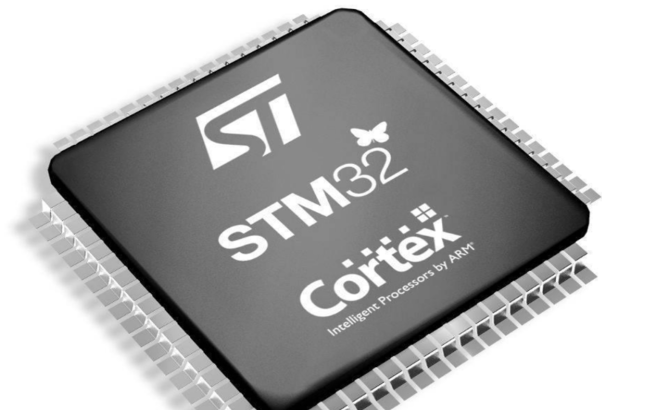1. Introduction to FSMC: FSMC is a flexible static memory controller. FSMC manages 1GB space and has 4 banks to connect to external memory. Each bank has independent chip select signals and independent timing configuration; supported memory types include SRAM and PSRAM , NOR/ONENAND, ROM, LCD interface (support 8080 and 6800 modes), NANDFlash and 16-bit PCCard.
2. The FPGA is driven as SRAM in the design, and the library function is used to realize the initialization configuration code of FSMC as follows:

//Initialize external SRAM
void FSMC_SRAM_Init(void)
{
FSMC_NORSRAMInitTypeDef FSMC_NORSRAMInitStructure; //Define the structure variable initialized by FSMC FSMC_NORSRAMTimingInitTypeDef readWriteTIming; //Used to set the FSMC read timing and write timing pointer variables GPIO_InitTypeDef GPIO_InitStructure; //Initialize the IO port of the FSMC bus
RCC_APB2PeriphClockCmd(RCC_APB2Periph_GPIOD|RCC_APB2Periph_GPIOE|RCC_APB2Periph_AFIO,ENABLE);
RCC_AHBPeriphClockCmd(RCC_AHBPeriph_FSMC,ENABLE); //Enable FSMC clock GPIO_InitStructure.GPIO_Pin =GPIO_Pin_8|GPIO_Pin_9|GPIO_Pin_10|GPIO_Pin_14
|GPIO_Pin_15|GPIO_Pin_0|GPIO_Pin_1
|GPIO_Pin_7|GPIO_Pin_11|GPIO_Pin_12|GPIO_Pin_13|GPIO_Pin_4|GPIO_Pin_5;
GPIO_InitStructure.GPIO_Mode = GPIO_Mode_AF_PP; //IO port is configured to multiplex push-pull output GPIO_InitStructure.GPIO_Speed ​​= GPIO_Speed_50MHz;
GPIO_Init(GPIOD, &GPIO_InitStructure);
GPIO_InitStructure.GPIO_Pin=GPIO_Pin_7|GPIO_Pin_8|GPIO_Pin_9
|GPIO_Pin_10|GPIO_Pin_11|GPIO_Pin_12|GPIO_Pin_13|GPIO_Pin_14|GPIO_Pin_15;
GPIO_InitStructure.GPIO_Mode = GPIO_Mode_AF_PP;
GPIO_InitStructure.GPIO_Speed ​​= GPIO_Speed_50MHz;
GPIO_Init(GPIOE, &GPIO_InitStructure);
GPIO_InitStructure.GPIO_Mode = GPIO_Mode_Out_PP;
GPIO_InitStructure.GPIO_Pin = GPIO_Pin_2|GPIO_Pin_6;
GPIO_InitStructure.GPIO_Speed ​​= GPIO_Speed_50MHz;
GPIO_Init(GPIOE, &GPIO_InitStructure);
readWriteTIming.FSMC_AddressSetupTIme = 14;
readWriteTIming.FSMC_AddressHoldTime = 0x00;
readWriteTiming.FSMC_DataSetupTime = 16;
readWriteTiming.FSMC_BusTurnAroundDuration = 0;
readWriteTiming.FSMC_CLKDivision = 0x00;
readWriteTiming.FSMC_DataLatency = 0x00;
readWriteTiming.FSMC_AccessMode = FSMC_AccessMode_A;
FSMC_NORSRAMInitStructure.FSMC_Bank=FSMC_Bank1_NORSRAM1;
FSMC_NORSRAMInitStructure.FSMC_DataAddressMux = FSMC_DataAddressMux_Disable;
FSMC_NORSRAMInitStructure.FSMC_MemoryType =FSMC_MemoryType_SRAM;
FSMC_NORSRAMInitStructure.FSMC_MemoryDataWidth = FSMC_MemoryDataWidth_16b;
FSMC_NORSRAMInitStructure.FSMC_BurstAccessMode=FSMC_BurstAccessMode_Disable;
FSMC_NORSRAMInitStructure.FSMC_WaitSignalPolarity = FSMC_WaitSignalPolarity_Low;
FSMC_NORSRAMInitStructure.FSMC_AsynchronousWait=FSMC_AsynchronousWait_Disable;
FSMC_NORSRAMInitStructure.FSMC_WrapMode = FSMC_WrapMode_Disable;
FSMC_NORSRAMInitStructure.FSMC_WaitSignalActive = FSMC_WaitSignalActive_BeforeWaitState;
FSMC_NORSRAMInitStructure.FSMC_WriteOperation = FSMC_WriteOperation_Enable;
FSMC_NORSRAMInitStructure.FSMC_WaitSignal = FSMC_WaitSignal_Disable;
FSMC_NORSRAMInitStructure.FSMC_ExtendedMode = FSMC_ExtendedMode_Disable;
FSMC_NORSRAMInitStructure.FSMC_WriteBurst = FSMC_WriteBurst_Disable;
FSMC_NORSRAMInitStructure.FSMC_ReadWriteTimingStruct = &readWriteTiming;
FSMC_NORSRAMInitStructure.FSMC_WriteTimingStruct = &readWriteTiming;
FSMC_NORSRAMInit(&FSMC_NORSRAMInitStructure);
FSMC_NORSRAMCmd(FSMC_Bank1_NORSRAM1, ENABLE);
delay_ms(50);
}
FPGA code:
//fsmc read / write ep4ce6 demo
module fsmc(
ab, //address
db, //data
wrn, //wr
rdn, //rd
resetn, //resetn
csn, //cs
clk
);
input[2:0] ab;
inout[15:0] db;
input wrn;
input rdn;
input resetn;
input csn;
input clk;
reg [15:0] ina = 16'd0; //Store data for ARM to read reg [15:0] inb = 16'd1;
reg [15:0] inc = 16'd2;
reg [15:0] ind = 16'd3;
reg [15:0] ine = 16'd4;
reg [15:0] inf = 16'd5;
reg [15:0] ing = 16'd6;
reg [15:0] inh = 16'd7;
reg [15:0] outa;
reg [15:0] outb;
reg [15:0] outc;
reg [15:0] outd;
reg [15:0] oute;
reg [15:0] outf;
reg [15:0] outg;
reg [15:0] outh;
wire rd;
wire wr;
reg [15:0] indata;
assign rd = !(csn & rdn); //get rd pulse ____|~~~~|______
assign wr = !(csn & wrn); //get wr pulse ____|~~~~|______
/*********When not performing read and write operations db=indata*********
*********When writing operation db=16'hzzzz**********
*********When performing a read operation db=indata**********/
assign db = rd? indata:16'hzzzz;
//write data, select eight spaces to write according to the address line, each space is 16 bits always @(negedge wr or negedge resetn)
begin
if(!resetn)begin
outa <= 16'h0000;
outb <= 16'h0000;
outc <= 16'h0000;
outd <= 16'h0000;
oute <= 16'h0000;
outf <= 16'h0000;
outg <= 16'h0000;
outh <= 16'h0000;
end else begin
case (ab)
3'b000:outa <= db;
3'b001:outb <= db;
3'b010:outc <= db;
3'b011:outd <= db;
3'b100:oute <= db;
3'b101:outf <= db;
3'b110:outg <= db;
3'b111:outh <= db;
default:;
endcase
end
end
//red data select 8 spaces to read according to the address line, each space is 16 bits always @(rd or !resetn)
begin
if(!resetn)indata <= 16'h0000;
else begin
case (ab)
3'b000:indata <= ina;
3'b001:indata <= inb;
3'b010:indata <= inc;
3'b011:indata <= ind;
3'b100:indata <= ine;
3'b101:indata <= inf;
3'b110:indata <= ing;
3'b111:indata <= inh;
default:;
endcase
end
end
endmodule
Li-(CFx)n Electro-Chemical Battery
DADNCELL lithium carbon fluoride battery (Li-(CFx)n) battery is a safe and stable battery system with an energy ratio of up to 2,400 wh/kg because of the positive electrodes used in CFx materials.
Fluorocarbon materials have stable physical and chemical properties and excellent high and low temperature operating properties. ≤600°C does not decompose, low temperature does not crystallize, and stable operation in a high and low-temperature environment at 20~125°C. The battery also has higher safety performance in short circuits, collisions, and compressions, and has explosion-proof and self-burning characteristics. At present, the whole series of products of the company's lithium fluoride batteries have passed the acupuncture test. Also, the lithium fluoride battery discharges only <0.5% per year, and the battery has a storage life of more than 10 years, at which time the battery can be thrown to save 95% of its electricity. There are no heavy metals and other pollutants in the production, use, and scrapping of batteries, which are green and environmentally friendly. All battery materials of DADNCELL batteries are independently developed and produced by the company, which can ensure the complete and long-term stable supply of the supply chain. Lithium fluoride batteries currently developed and produced by the company are applied on a large scale in fields with strict requirements for high and low temperature and high energy density, such as automobile tire pressure gauge (TPMS) batteries, industrial control motherboard batteries, computer motherboard batteries, smart instrument batteries, emergency equipment power supply for oilfield rigs, offshore rescue. Bioflash, implantable medical battery, etc.
The company can formulate DADNCELL lithium fluoride series battery solutions according to customer requirements.
Li-(Cfx)N Electro-Chemical Battery,Li-(Cfx)N Battery Pack,Lithium Carbon Fluorine Soft Pack Battery,High Temperature Resistance
Shandong Huachuang Times Optoelectronics Technology Co., Ltd. , https://www.dadncell.com